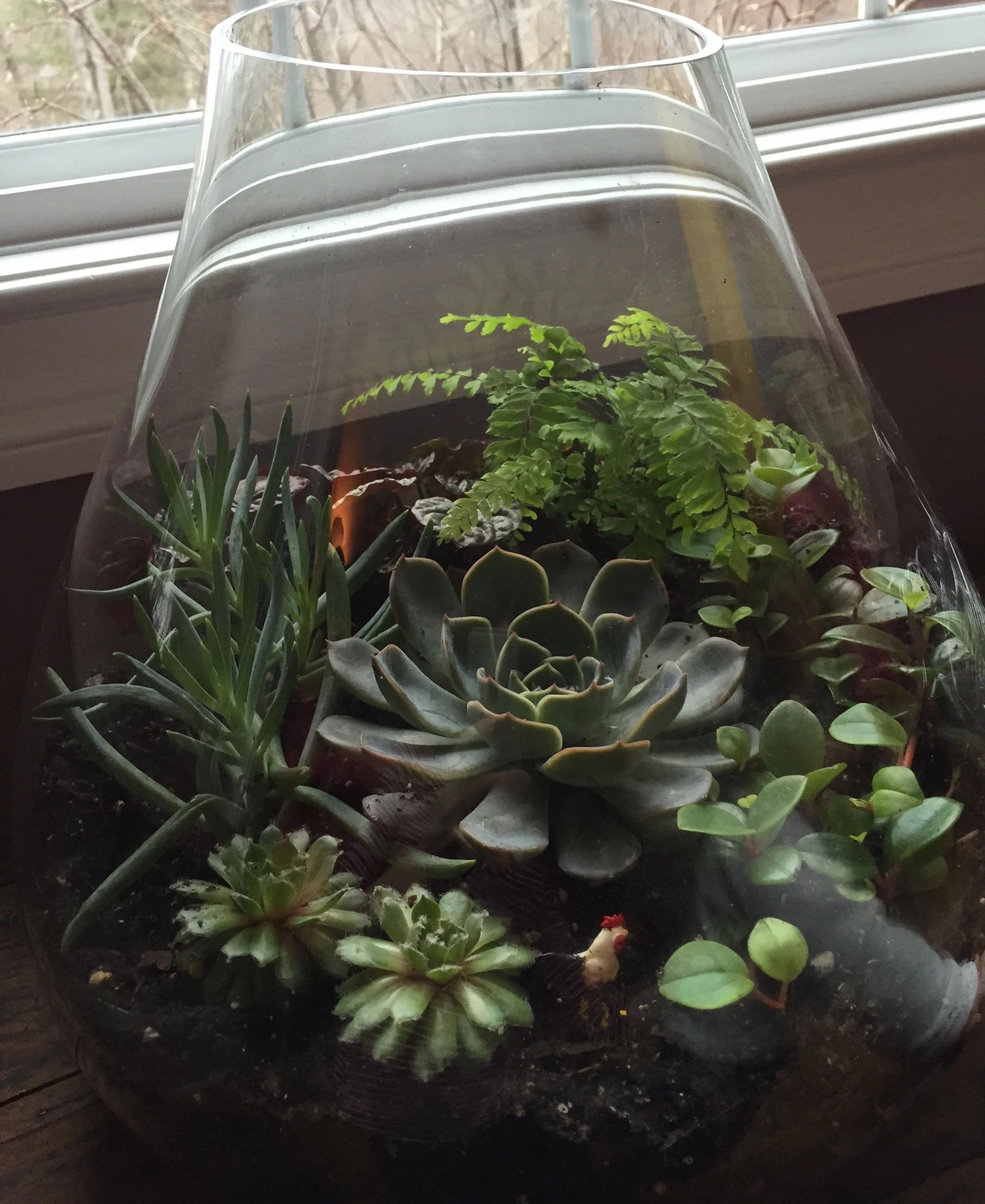Pay Attention!
A terrarium can function as a restorative environment, especially when a small figure (can you spot the tiny chicken) shifts the sense of scale.
A glut of information floods our human environment, demanding that we pay attention, solve problems, focus. But attention is a scarce resource, and it’s easy to spend too much. We get tired, worn down, grumpy, make bad decisions, loose the ability to regulate our emotions. I wrote a bit in my last post about how too much demand on our directed attention—activities that require the use of higher mental processes—can lead to mental fatigue syndrome. Many folks rely on a regular practice of yoga, running, biking or meditation to give their minds a rest. But just being in nature can have a similar, and perhaps more powerful effect. It doesn’t have to be a wilderness immersion. A windowsill with a bunch of house plants will do. Here’s why.
Even brief experiences with elements of the natural world can offer access to a restorative environment—a setting that assists in the recovery from tension or chronic fatigue. While a natural environment is not the only type of restorative environment, it is a deeply effective one. For twenty-first century humans, it affords the most likely opportunity to access four key qualities.
Being away: A change of setting—whether physical or mental, such as feeling transported by a good book—will cue a shift in our thoughts away from what drains us.
Extent: The experience must be engrossing, vast in scope, or offer a sense of completeness. This helps us feel we are truly away. But we don’t have to stand on a moutaintop to have this experience. Terrariums are so enchanting because they allow us to imagine a whole world or ecosystem in minature.
Compatibility: What the environment asks of us must be in line with our own inclinations and preferences. I’m not a desert person—hot, dry and dusty are not my thing. So I probably wouldn’t find a camping trip to the Gobi as restorative as, say, floating in a canoe on Lake George.
Fascination: When we are fascinated with something, our attention is drawn to it. But the attention here is of an entirely different sort than the kind that empties the thank. Involuntary attention is that effortless engagement with the world around us that can provoke a sense of awe, or peace.
One of my favorite restorative environments is the short walk from the house to the chicken coop, usually around sunset, when the ladies are already up on their roost and I can do the chores without their pestering. Our house sits on a hill, overlooking a meadow, with the Shawangunk ridge hovering in the distance. I allow myself to be distracted by any little miracle—the play of light on a stand of sumac, the vibrant colors of sunset, the first fireflies of the evening, a swooping bat. These short walks can become long, restorative pauses.
Another go-to venue for involuntary attention in my life is the garden center. It can be a whole world unto itself. I love to stroll down isles of plants, my hands gently brushing them as I take in their textures, the sound of their leaves rustling, their colors and scents. No purchases required—just take in the dynamic and changing selection of herbs, flowering perennials, shrubs and trees and let them open a door to a world of future possibilities in the garden.
What restorative environments do you rely on when you need to fill up your tank? Identify them, and use them! Find a patch of grass, lie down, and bring this vast, normally underfoot, ecosystem to eye level. Allow yourself to be fascinated by a blade of grass—the subtle shift in green hues, its gentle arching backbend. Just a few minutes to let your mind be pulled by nature can have a huge impact on your mental and physical well-being .

